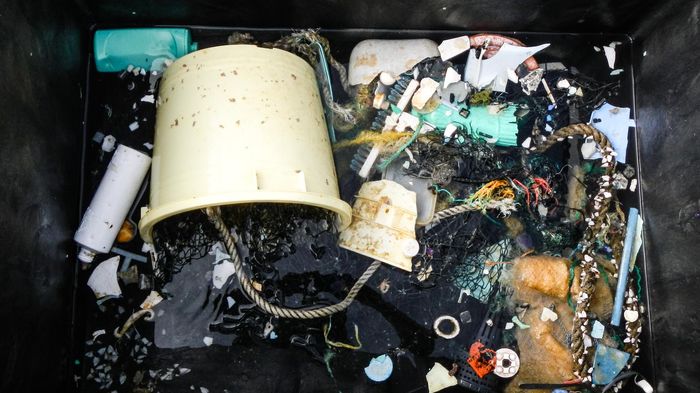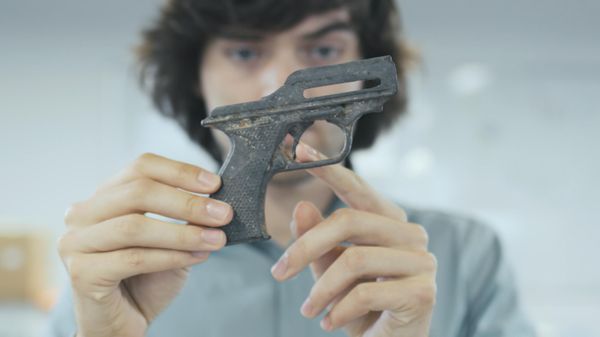
Great Pacific Garbage Patch Growing Rapidly, Study Shows
Back to pressNew analysis reveals the region contains as much as sixteen times more plastic than previously estimated, with pollution levels increasing exponentially.
Delft, the Netherlands, March 22, 2018 – 1.8 trillion pieces of plastic weighing 80,000 metric tons are currently afloat in an area known as the Great Pacific Garbage Patch – and it is rapidly getting worse. These are the main conclusions of a three-year mapping effort conducted by an international team of scientists affiliated with The Ocean Cleanup Foundation, six universities and an aerial sensor company. Their findings were published today in the journal Scientific Reports.
The Great Pacific Garbage Patch (GPGP), located halfway between Hawaii and California, is the largest accumulation zone for ocean plastics on Earth. Conventionally, researchers have used single, fine-meshed nets, typically less than a meter in size, in an attempt to quantify the problem. However, this method yields high uncertainty because of the small surface area that is covered. Additionally, these methods could not measure the magnitude of the problem to its fullest extent, because all sampling nets – small and large – were unable to capture objects greater than the size of the net.
In order to analyze the full extent of the GPGP, the team conducted the most comprehensive sampling effort of the GPGP to date by crossing the debris field with 30 vessels simultaneously, supplemented by two aircraft surveys. Although most vessels were equipped with standard surface sampling nets, the fleet’s mothership RV Ocean Starr also trawled two six-meter-wide devices, which allowed the team to sample medium to large-sized objects.
To increase the surface area surveyed, and quantify the largest pieces of plastic – objects that include discarded fishing nets several meters in size – a C-130 Hercules aircraft was fitted with advanced sensors to collect multispectral imagery and 3D scans of the ocean garbage. The fleet collected a total of 1.2 million plastic samples, while the aerial sensors scanned more than 300 km2 of ocean surface.
The results, published today in Scientific Reports, reveal that the GPGP, defined as the area with more than 10 kg of plastic per km2, measures 1.6 million square kilometers, three times the size of continental France. Accumulated in this area are 1.8 trillion pieces of plastic, weighing 80.000 metric tons, the equivalent of 500 Jumbo Jets. These figures are four to sixteen times higher than previous estimates. 92% of the mass is represented by larger objects; while only 8% of the mass is contained in microplastics, defined as pieces smaller than 5 mm in size.
“We were surprised by the amount of large plastic objects we encountered”, said Dr. Julia Reisser, Chief Scientist of the expeditions. “We used to think most of the debris consists of small fragments, but this new analysis shines a new light on the scope of the debris.”
By comparing the amount of microplastics with historical measurements of the GPGP, the team found that plastic pollution levels within the GPGP have been growing exponentially since measurements began in the 1970s. Laurent Lebreton, lead author of the study, explains: “Although it is not possible to draw any firm conclusions on the persistency of plastic pollution in the GPGP yet, this plastic accumulation rate inside the GPGP, which was greater than in the surrounding waters, indicates that the inflow of plastic into the patch continues to exceed the outflow.”
Boyan Slat, Founder of The Ocean Cleanup and co-author of the study, elaborated on the relevance of the findings for his organization’s cleanup plans: “To be able to solve a problem, we believe it is essential to first understand it. These results provide us with key data to develop and test our cleanup technology, but it also underlines the urgency of dealing with the plastic pollution problem. Since the results indicate that the amount of hazardous microplastics is set to increase more than tenfold if left to fragment, the time to start is now.”
LINKS
Access the Publication on Scientific Reports >
Visit the dedicated Great Pacific Garbage Patch page >
See all Scientific Publications >
VIDEOS


###
Note for the editors, not for publication.
PRESS CONTACTS
CFF Communications, Amsterdam
Jan van Ewijk/ Claire Verhagen
press@theoceancleanup.com
T: +31(0)20 575 40 10
DOWNLOADS
Photos, video footage and illustrations supplementing this press release can be downloaded from the media gallery.
Institutions involved in this study:
- The Ocean Cleanup (the Netherlands)
- The Modelling House (New Zealand)
- Teledyne Optech, Inc. (U.S.A.)
- University of Portsmouth (UK)
- Roger Williams University (U.S.A.)
- Sorbonne Universités (France)
- Technical University Munich (Germany)
- Carl von Ossietzky University Oldenburg (Germany)
- Aalborg University (Denmark)
About The Ocean Cleanup
The Ocean Cleanup develops advanced technologies to rid the world’s oceans of plastic.
Founded in 2013 by Boyan Slat (23), The Ocean Cleanup now employs approximately 75 engineers and researchers. The foundation is headquartered in Delft, The Netherlands.
Instead of going after plastic debris with vessels and nets – which would take many thousands of years and billions of dollars to complete – The Ocean Cleanup is designing a fleet of extremely long floating screens that will remain in the water to act like an artificial coastline, enabling the ocean to concentrate the plastic using its own currents. Once fully operational, this fleet of passive collection systems is expected to remove 50% of the Great Pacific Garbage Patch in 5 years’ time.
After years of conducting reconnaissance expeditions, scale model tests and the deployment of prototypes on the North Sea, the first full-scale cleanup system is currently in production. It is set to be deployed in the Great Pacific Garbage Patch by mid-2018.

